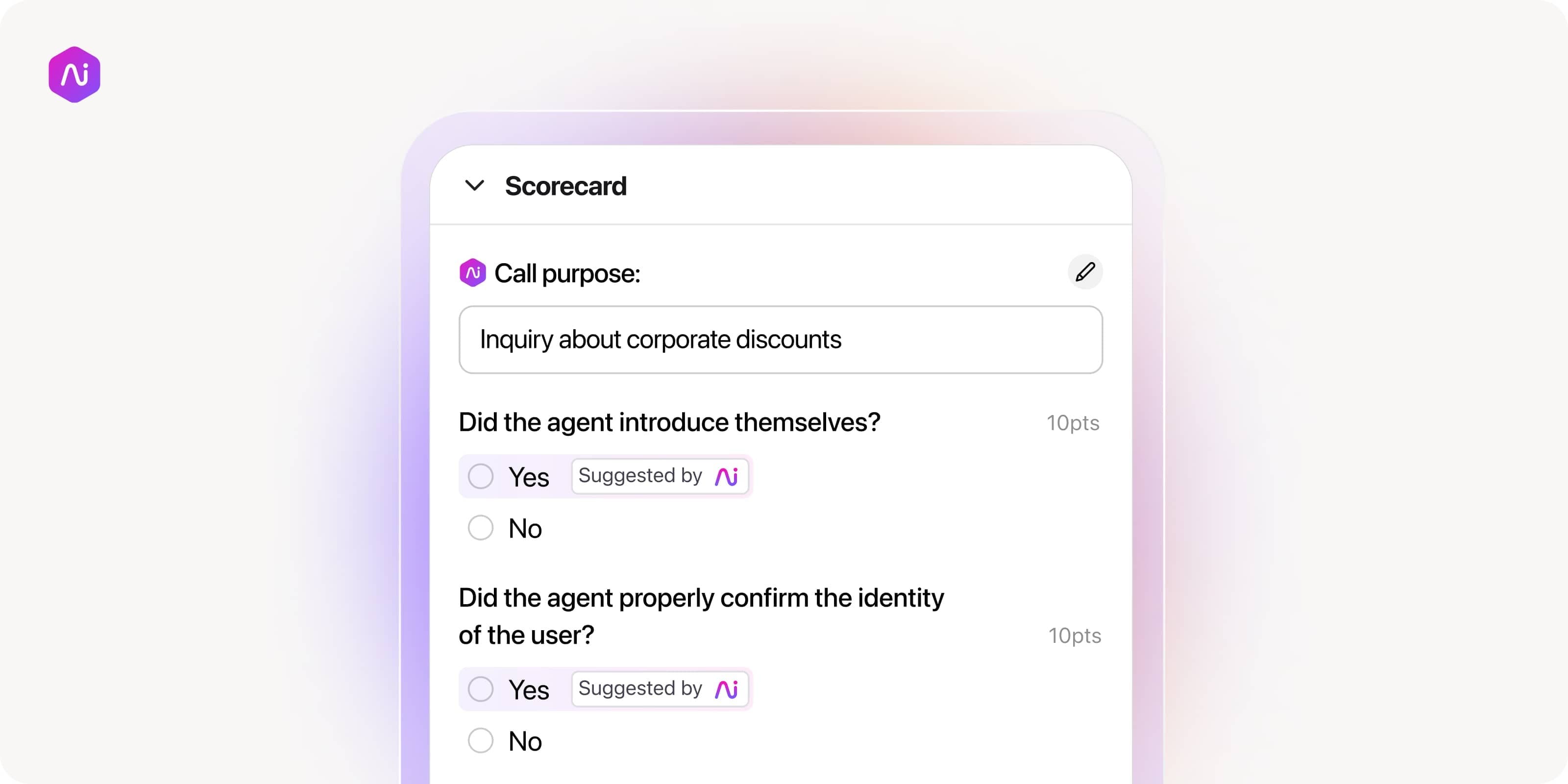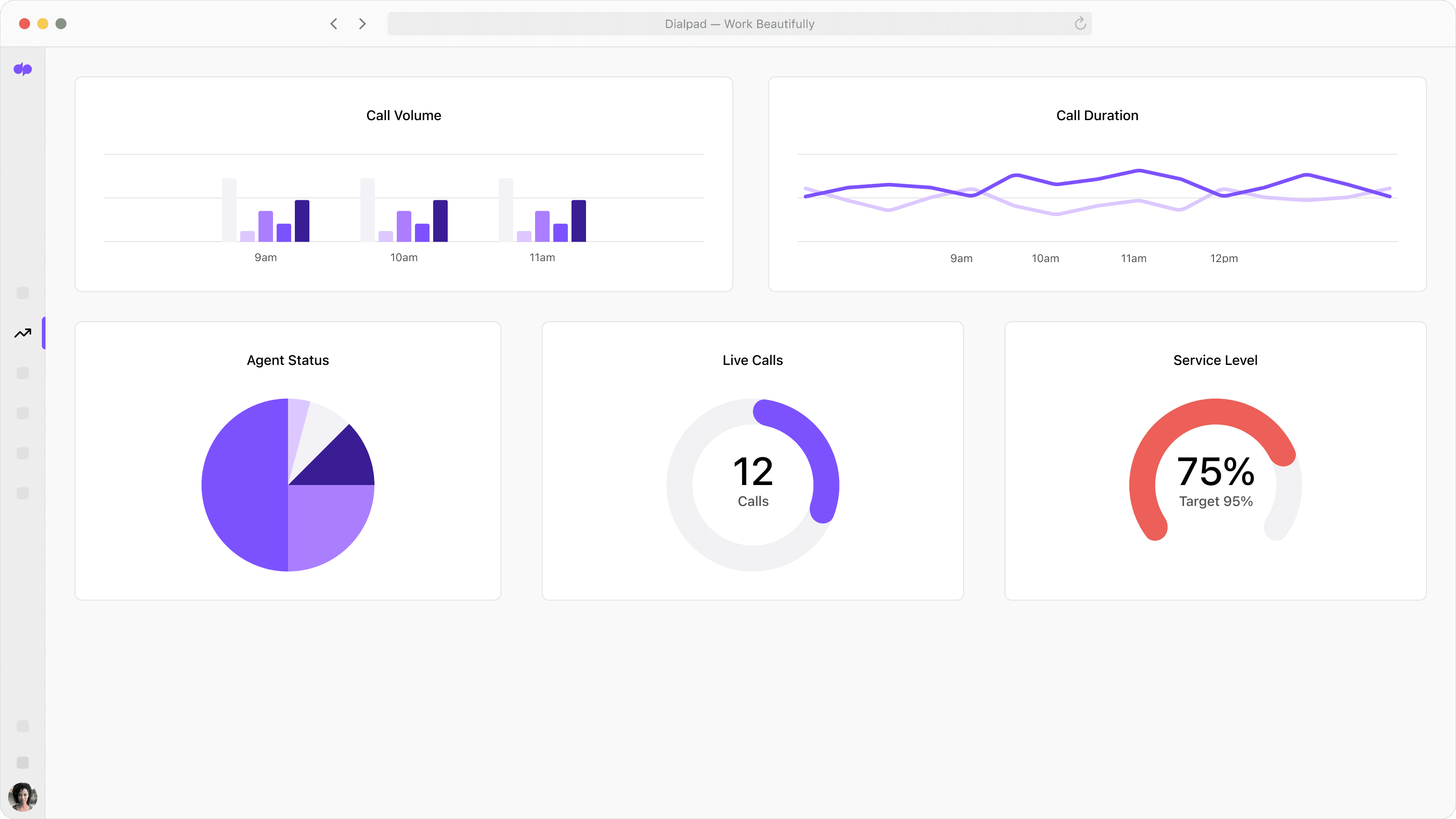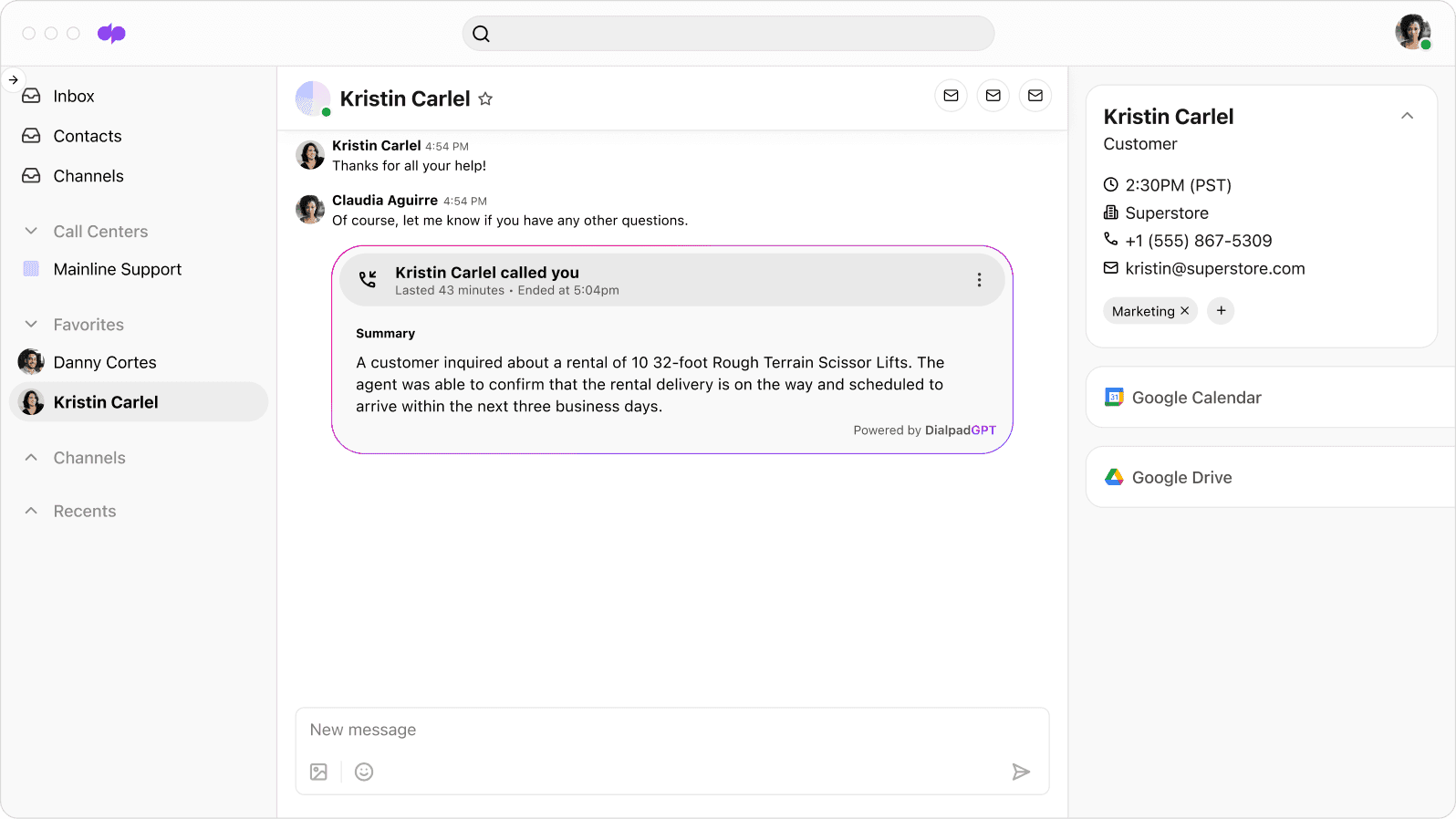Call calibration: Maintain consistency in quality assurance and help agents achieve high standards

Senior Content Marketing Manager

Tags
Share
If you ask ten different people to define what great customer service looks like, you’ll probably get ten slightly different answers. Even though we all kind of know what’s generally good and what’s generally bad when it comes to handling customer calls, it’s all still a little subjective.
And that’s a bit of a problem if you want to set and maintain consistent customer service standards.
Call calibration is a proven way to get around that subjectivity and get everyone on your team on the same page. Instead of each agent or manager flying by the seat of their own interpretation of what’s good, you can establish some clear and consistent standards everyone on the team can use.
When done right, call calibration is how successful customer service departments, call centers, and sales teams keep call quality high across the board.
What is call calibration?
Call calibration is a tool used by highly effective call centers and sales teams. It’s a relatively simple process where a team reviews real recorded calls together. These sessions might include managers and team leads as well as individual reps.
During these sessions the goal is simply to align on call quality standards, so that everyone is scoring each call in a similar way. These sessions can be used as a jumping off point to create new call quality standards, as well as periodic check-ins to ensure existing standards are being implemented consistently.
It’s kind of like having GPS with live traffic updates in your car; it helps you end up in the right place, sure, but it also helps you avoid unexpected problems and still arrive on time.
The purpose of call calibration in call centers
No two sales or customer service calls are the same. But that doesn’t mean every time one of your agents picks up the phone it should unfold like a “choose your own adventure” novel.
Every time one of your agents picks up the phone they should have a crystal-clear idea of what delivering great customer service looks like.
If your team hasn’t done call calibrations in a while (or at all) here are a few reasons to block off some time on your team’s calendar and bring everyone together.
Ensure calls are monitored and rated consistently
The biggest benefit of call calibrations in a call center or on a sales team is all about consistency. When done correctly, call calibrations mean all of your calls are being monitored and rated against consistent standards or metrics.
It’s worth nothing that call calibrations might not help you achieve the call quality results you’re after right away, but that’s beside the point. Doing call calibrations is the first step to establish a baseline for quality monitoring and assurance. Once you set this baseline you can start identifying ways to clarify your standards and improve call quality.
Encourage cross-organizational understanding of call rating standards
Companies that excel at customer service know it’s a team effort. Call calibration in a call center, for example, works best when a wide variety of stakeholders are included—from managers to leads to agents. Each role brings a different perspective to how a customer call should be scored.
Additionally, bringing each of these different roles into the call calibrations process gives each person new insights into the goals and challenges for different areas of the business.
Agents, for example, might benefit from seeing how call quality impacts the bottom line, while leaders might gain a better understanding of procedural roadblocks that are slowing the call center’s overall response time down.

Identify areas of weakness in customer service
By going through call calibration and aligning on call quality standards, it’s easier to spot when, where, and why calls have gone wrong. It also makes it easier to detect patterns or persistent areas of weakness across entire departments or teams.
With areas of weakness identified, managers and other leaders can address known issues more precisely, either through refined processes, new training programs, or even by procuring new tools. Each round of call calibrations a team does will shed new insights into team performance, which will help build a culture of continuation improvement.
Assist in improving agent coaching
Just as call calibrations make it easier to spot areas of weakness in a team or department, they also make it easier to pinpoint opportunities for improvement in the skills and behaviors of each individual agent.
By having an established call quality baseline or set of standards in place, agent coaching sessions can be tailored to address the specific needs of an individual agent. This removes a lot of the subjectivity that can make scoring customer service performance problematic for everyone.
Call calibration best practices: How to get the most out of the process
There are a few essential things you need to include in your call calibration process, otherwise you might just be putting everyone in a room together for a few hours to create a set of poorly defined QA guidelines your team ends up ignoring.
Here are three essential ingredients you need if you want your call center calibration program to have any chance of being successful.
1. Define customer service standards and train your agents to meet them
Call calibrations can help you fine-tune and sharpen your customer service standards. They can also inform how you train your agents to meet those standards. But if you’re just starting on your team’s call calibration journey, you may not have enough data yet to do this effectively.
Do your best to document your existing call center quality assurance standards, and review your agent training programs to ensure new agents are being set up to meet those standards. These standards and agent training programs will morph and evolve over time as you go through more and more rounds of call calibrations, but having some version of them in place before you start is essential.
2. Utilize AI for more accurate and informative quality monitoring and assurance
Monitoring and scoring customer service calls accurately is a critical part of keeping call quality high. Call calibration sessions are a great way to establish, review, and update your quality assurance standards. But what about maintaining those standards day in and day out? Call center managers and sales leaders can’t shadow every single call, after all.
This is an area where AI tools can help accurately review calls for real-time quality assurance. Take Dialpad’s Ai Scorecards, as an example. Each call is automatically scored against custom QA metrics, giving managers the ability to quickly spot issues in real time, as well as review results across agents and teams at both the micro and macro levels.

3. Properly analyze and act upon call calibration feedback
Call calibration sessions are only as valuable as the outcomes they produce, so this step is where the real magic happens—turning insights into action.
Each time your team goes through one of these sessions you’ll come away with a great big pile of feedback—from challenges and roadblocks your agents are dealing with, to new ideas and big questions they have. All of these are valuable opportunities to dig deeper and refine your processes, templates, scripts, and call center coaching.
Remember, the goal of call calibration is continuous improvement. Taking the time to properly analyze the big and small takeaways from call calibration sessions—and then making an action plan to improve—is the only way to make these sessions worth your team’s time.
Improve your call calibration with Dialpad Support
Call calibrations are simple enough in theory. Get your team in a room together, figure out what “good” call quality looks like, and review some real calls together to see if everyone is scoring things more or less the same—then analyze, optimize, and repeat.
Of course, nothing is ever really that simple. The success of call calibrations at any company requires the process to be implemented consistently and accurately. Every call needs to be monitored and accurately scored against a consistent set of standards or metrics, and then tracked over time to identify patterns—both good and bad.
If you’re relying on your teams to do any of this manually in a spreadsheet, you won’t be unlocking the full potential of call calibration. Your teams need to have the right tools in place to consistently monitor, score, and track calls in real-time automatically.
Dialpad Support is a great way to up your call quality game, and it comes equipped with a range of Ai-powered features that can help you maximize your team’s call calibration efforts in particular.
For instance, customer calls will be automatically recorded, scored, and even summarized with action items.

Ai Scorecards for each call can be used to track quality assurance efforts in line with call calibration sessions, and be used to inform call coaching programs, training, onboarding, and more.
Dialpad Ai makes call calibration a breeze
See how Dialpad Support can help you handle call calibration with ease. Book a demo, or take a self-guided interactive tour of the app first!
